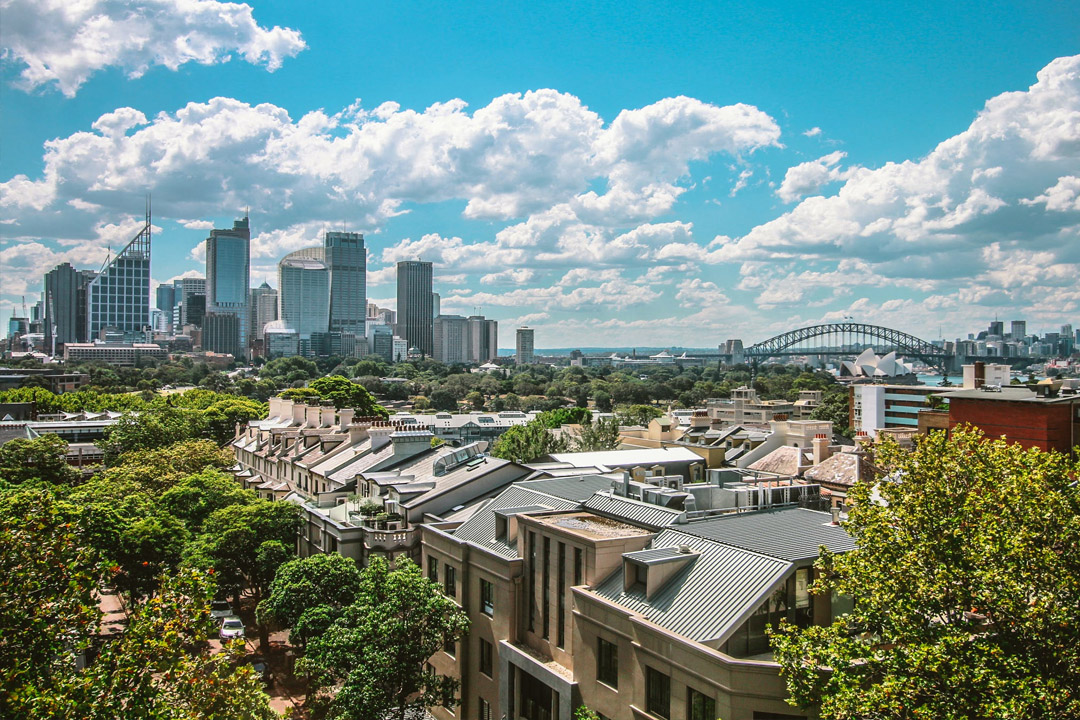

Concerns about a booming property prices have come from the major banks, the RBA, Treasurer Josh Frydenberg and even the IMF! And it comes as the country’s chief mortgage stress watcher says property purchasers’ pressure is shooting through the roof.
The word on the street is that the Australian Prudential Regulation Authority (APRA) will strike in coming months and it’sset to tell banks to do a Little Britain and have their loan assessment models set up so the lender will say to would-be borrowers: “Computer says no!”
Sydney house prices are up over 30% in two years, but that’s an average, with some suburbs up 40% or more!
A house in the middle-class suburb of Haberfield recently sold for $7 million, $2 million over the reserve!
And while all these frothy prices is great news for homeowners, would-be buyers are frozen out of home ownership. And those who have overborrowed ultimately pose a problem, not only for themselves but for the economy.
Martin North of Digital Finance Analytics also says if interest rates rise by half-a-percent, 223,718 households will encounter mortgage stress, meaning the total number of households in a home loan pressure cooker is 1.782 million!
A lot of this comes out of overborrowing. That’s defined as someone who borrows more than five times their income. DFA calculates that 51% (or 788,000) of households have done exactly that, which is behind the huge spike in house prices.
Interest rate rises historically have run ahead of a stock market crash and a recession, but usually it takes a lot of rate rises to spook consumers and businesses to go on a spending strike that leads to a collapse of the economy.
Putting it altogether, the Government and financial system regulators not only have an economic reason to worry about the surging house prices, there’s also a social and household financial issue related to this growing mortgage stress.
So, we should expect all or some of these restrictions imposed on borrowers from APRA soon:
1. They could put limits on how much home buyers can borrow from the banks.
2. They could make investor loans harder to get.
3. There should be a crackdown on low-deposit loans.
4. And they will make lenders have more intrusive reviews on a borrower’s spending.
5. Also they will make lenders increase the interest rate servicing buffer, which means if you borrow at 3%, the bank will test whether you could make repayments easily at 5% or 6%. And if you can’t, then “Computer says no.”
Happily, first homebuyers are likely to be spared much of this expected loans crackdown, but most borrowers in 2022 should expect a rough treatment from lenders, with APRA putting the frighteners on them.
Back on mortgage stress, and over-borrowing is often the source and it’s likely to happen if someone borrows more than five times their income.
Sydney’s eastern suburbs of Clovelly, Maroubra and Randwick have some of the highest level of over-leveraged households according to Digital Finance Analytics. And the AFR’s Nila Sweeney reports: “In postcodes 2031 and 2035, where Clovelly, Clovelly West, Randwick and Maroubra are located, more than eight in 10 households on average have borrowed more than five times their incomes.”
DFA says there are 446 postcodes in Sydney and 423 in Melbourne all with high levels of mortgage stress.
So what can you do if that’s you? Try this seven things as a start:
1. Assess how you’d cope if interest rates rise by 0.5%, 1% and then 2%. I can’t see significant rises until 2023 at the earliest, but I could be proved wrong.
2. Go to a mortgage broker and make sure you have the lowest interest rate possible.
3. Lock in a long, fixed rate home loan if you think your potential cash flow problems are more likely to be in the short term rather than the long term.
4. Do a budget and try to make substantial savings by say, GST’ing your life and putting a 10% tax on your spending. Then bank that against your home loan to build up a buffer in case interest rates rise sooner than we think. (The RBA says the first rate rise won’t be until 2024 but if the economy grows quickly they could rise in late 2022 or 2023.)
5. You could sell your house in a strong market and trade back or even
gamble on renting for a couple of years on the idea that house prices will
start falling in 2023 or even earlier. That’s a big gamble but if you have made
a big tax-free capital gain, it could prove to be a winning plan over time.
But, as I say, it is a gamble.
6. Could you convert a garage into a granny flat to get extra income that will
help you pay any future rises in interest rates?
7. Get a second job or start a side hustle business to bump up your income. The bottom line is that you need to be able to cope with rising interest rates and the possibility that you have bought at the top of the market. Over time you should see good capital gain but it might take 10 years, so you need to be able to service that loan. Sticking in your head in the sand with home loans when interest rates rise can leave you exposed to a real butt-kicking!